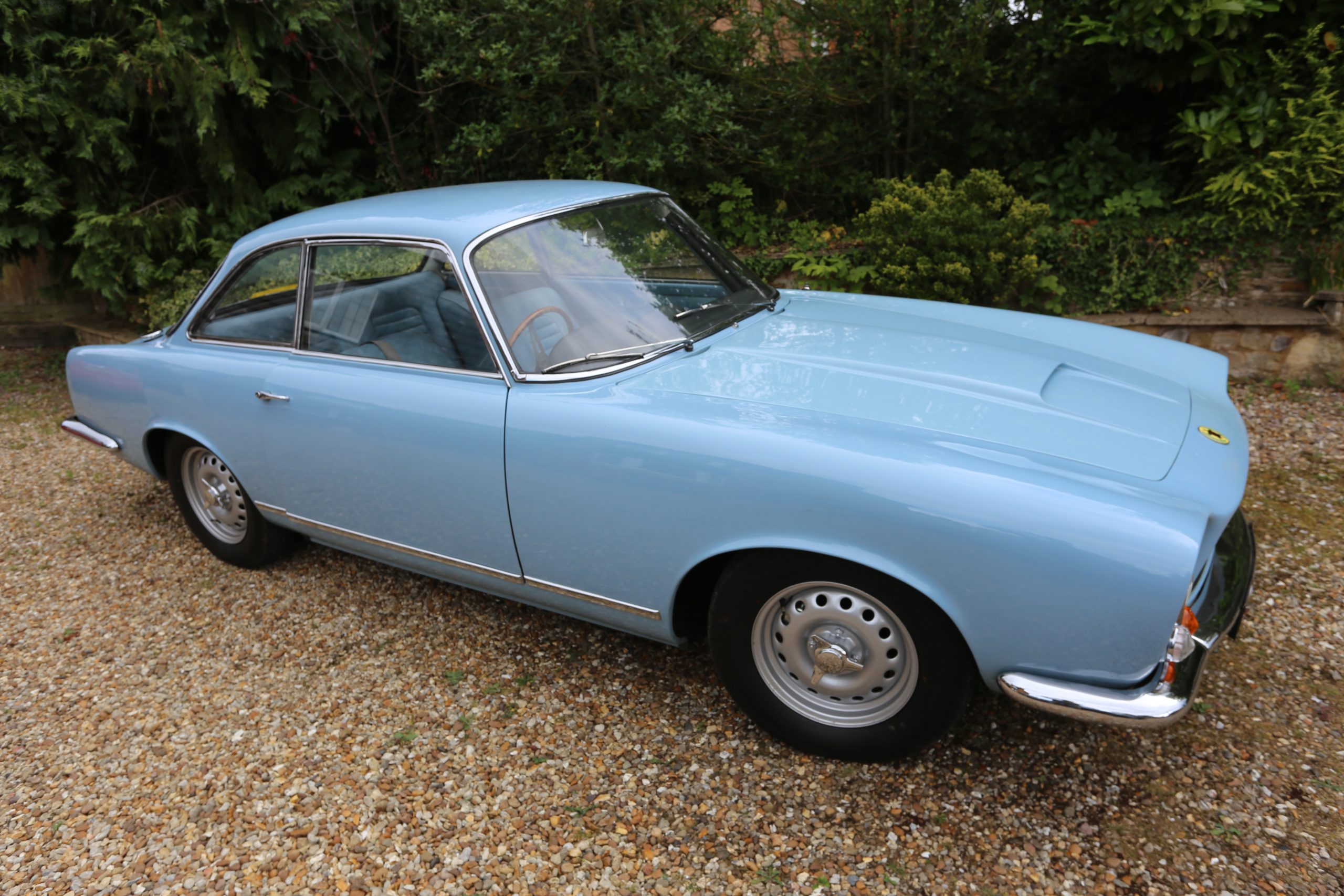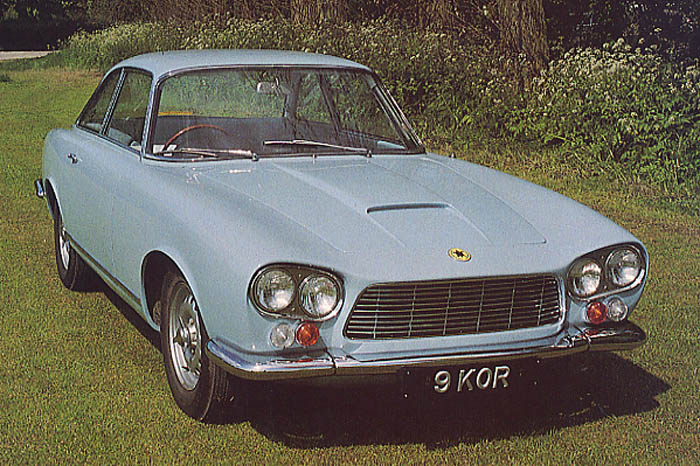The Gordon-Keeble
Gordon-Keeble
Four frustrating years after its celebrated launch, production of the Gordon-Keeble GK1, as it became known, finally commenced at Eastleigh aerodrome (now Southampton Airport) in the building that had previously been used to prepare the very first Supermarine Spitfire for its maiden flight in 1936.
To save the enormous cost of press tooling, the coachwork was now glass fibre, made to a very high standard by craftsmen formerly employed at famous local aircraft and shipbuilding companies in the area.

John Gordon had, by now, left the company, taking with him the rights to the badge worn by the Gordon G.T. – a rampant stag’s head, based on the emblem of the Clan Gordon and the Gordon Highlanders Regiment.
This left the Gordon-Keeble without a bonnet motif when it took part in an early publicity photo-shoot. Until, that is, some wag from the media company picked up a passing tortoise and placed it where the badge would have been. The awful pun of one of the world’s slowest animals sitting on a car which was at the time the world’s fastest four-seater, was just surreal enough to justify its adoption as the badge. As time would tell, it was a good choice – the strength of the body and longevity of the Gordon-Keeble being akin to that of the tortoise – and it remains to this day a wonderful talking-point!

The 5.3 litre V8 Chevrolet engine, mated to a Warner T-10 manual 4-speed gearbox, imparts the cars with stunning performance: 300bhp and torque of 360ft.lb provides a top speed of 140mph and acceleration to 60mph in less than 7 seconds with 100mph reached just 10 seconds later. First gear is good for at least 50mph and yet amazing flexibility allows the car to crawl at little more than walking pace in any gear, even top.
Tested by the leading motoring magazine of the day, ‘Autocar’, in 1965, they described it as “a car which is way ahead of anything else in its class”, while its arch-rival ‘Motor’ simply described the Gordon-Keeble as an “electrifying four-seater”.
But the mid-1960s was not a good time for a ‘start-up’ company in the motor industry. Insufficient initial funding and a selling price set too low were compounded by constant strikes at suppliers. This interrupted production and caused severe cash flow problems, leading to the firm going into liquidation in May 1965 after some 82 cars had been completed.
Though the company was refinanced and restructured by a London-based concessionaire that had been selling the Gordon-Keeble, it failed again less than 12 months later. The new enterprise had managed to finish off 11 partially-built examples, renamed the I.T., and build 6 more from scratch. Just 99 cars had been made in total. Four years later, they would be joined by another, now known as no.100, built up from leftover parts by a garage in North London.
What happened to the prototype? After its rapturous introduction, it appeared in a British-made film, “The Green Helmet”, and was extensively campaigned until production finally started. Thereafter, it slipped into oblivion for many years, until it changed hands in the 1990s and the new owner began restoring it – a task that was never completed. Today, it languishes in a lock-up in England, only partially finished, undriveable but still fitted with poor Rick Nielsen’s engine. Though he did get his modified Peerless, albeit less its power plant!
Remarkably, all except 10 cars still exist, and at least 70 are still in use, of which 27 are overseas. All cars were made right hand drive and, apart from some very minor differences, all originally looked the same. Over the years, several have inherited bumpers ‘borrowed’ from other makes, and many now have enlarged wheel arches to accommodate wider wheels and tyres.
The high survival rate of the marque can be attributed to brilliant original design, superb build quality and the Gordon-Keeble Owners’ Club (GKOC), founded in 1970 by Ernie Knott. It was he who set about sourcing spares, even arranging for the remanufacture of some, servicing the cars and developing a number of optional upgrades and modifications. These included rack and pinion steering, often powered, revised front suspension geometry, anti-roll bars, a few conversions to automatic gearbox, fresh air ventilation and repaints that were amongst the finest obtainable anywhere!
Sadly, Ernie passed away in 2002, but today more than one centre of excellence exists for spares, advice and maintaining the cars and the GKOC remains as active and enthusiastic for the marque as ever, publishing a high quality quarterly magazine and organising exciting annual events both at home and abroad.

Get In Touch
+44 (0)7973 685 453
Location
United Kingdom
info@gordonkeeble.org.uk
Need more information about the Gordon-Keeble Owners’ Club? Contact us anytime with your enquiries. We’d love to hear from you!